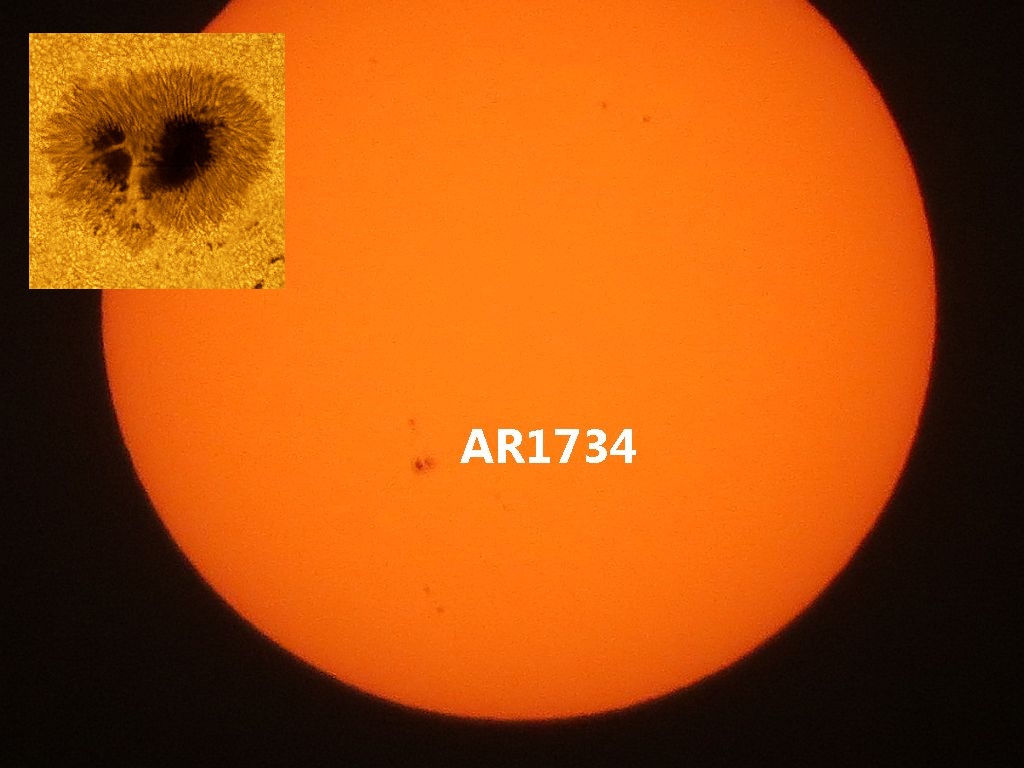I read about this sunspot on SpaceWeather.com today. Seeing the article prompted me to get out the tripod and solar filter out and try to get a picture of my own. In the enlarged version of this image, you can see that I managed to capture the structure of this unusual-looking sunspot (inset). Click on the image to enlarge.
From SpaceWeather.com
Around the world, amateur astronomers are snapping pictures of behemoth sunspot AR1734 as it crosses the solar disk. In Buffalo, New York, photographer Alan Friedman noticed something when he rotated his picture 90 degrees. “Sunspot 1734 has a definite owlish look!” “But who gives a hoot,” he continued, “this grand active region looks fantastic from every perspective.”
The owl could be poised to explode. Sunspot AR1734 has a ‘beta-gamma’ magnetic field that harbors energy for M-class solar flares, almost-certainly Earth-directed because the sunspot is facing our planet. NOAA forecasters estimate a 45% chance of M-flares on May 6th.


That is absolutely amazing. Thanks for sharing.
I have a telescope, but no solar filter for it. However I do pretty well using the setup I had for the May 2012 annular eclipse.
Cap’n, I use my spotting scope as a heliostat, focusing a picture of the sun on a piece of paper. I did this with Venus’ last transit of the sun. Worked real well.
I used a similar method to view the July 11, 1991 solar eclipse using a pair of binoculars as a helioscope. That does work pretty well.